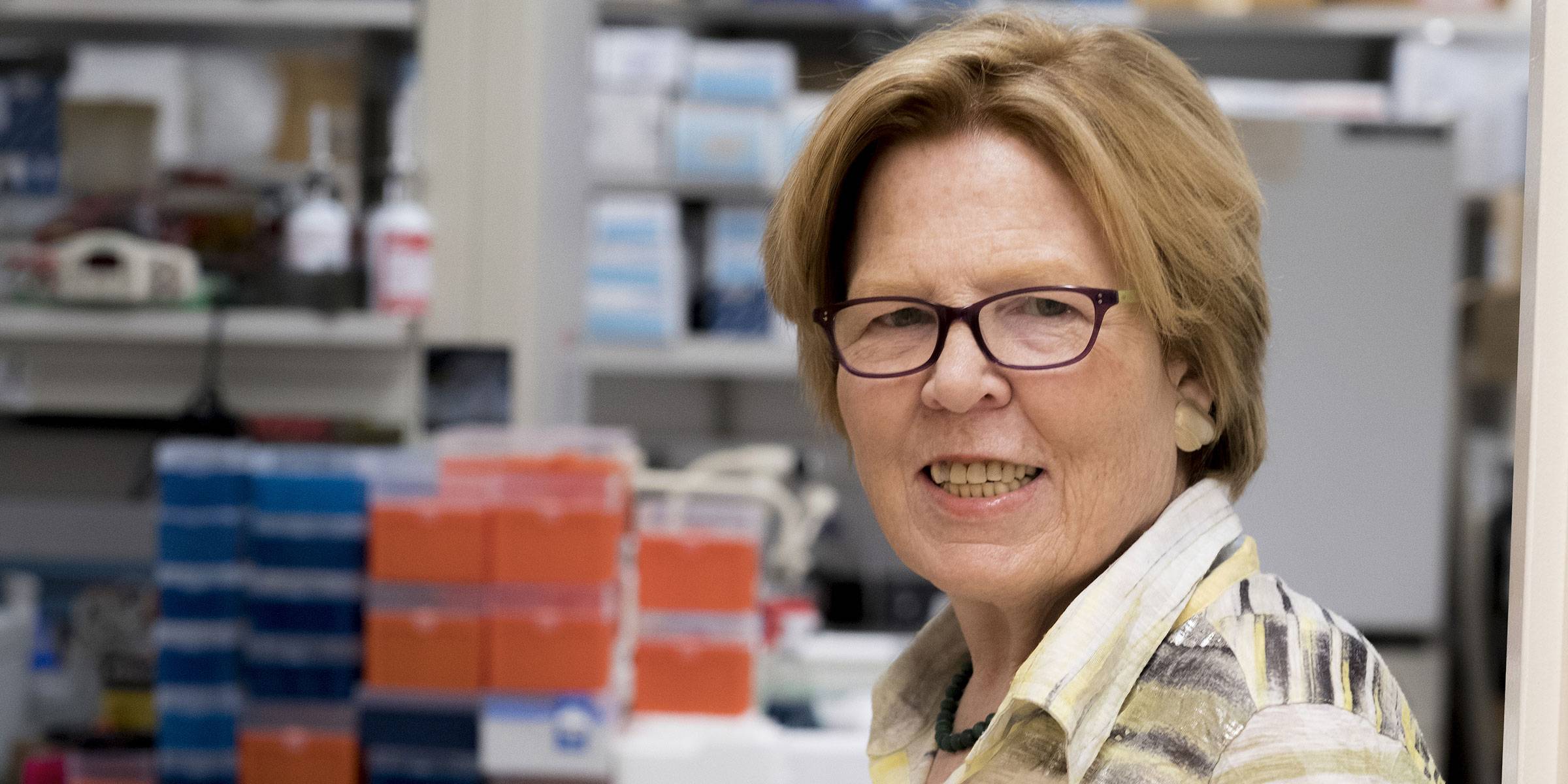Mary E. Hatten, Ph.D.
Frederick P. Rose Professor
Hatten studies the development of the complex cellular architecture of the mammalian brain. Her research on how neurons migrate and differentiate has implications for the genetics of brain disease, as well as conditions that are partially due to developmental abnormalities, such as autism spectrum disorders (ASDs), attention deficit disorder, and childhood epilepsy. Her work has also provided insights into medulloblastoma, a prevalent childhood metastatic brain tumor.
Using the mouse cerebellar cortex as a model, Hatten studies the mechanisms of cerebellar neurogenesis and migration during central nervous system (CNS) development. Her lab pioneered the development of video imaging methods to view the dynamics of CNS neuronal migration along glial fibers. Using these methods, Hatten discovered the cellular and molecular mechanisms of glial-guided CNS migration.
To analyze how epigenetic mechanisms regulate CNS development, the Hatten lab recently studied patterns of histone methylation in developing cerebellar granule cells (GCs). Their studies showed that in proliferating GC progenitors, H3K4me3/H3K27me3 bivalency is common at neuronal genes and undergoes dynamic changes that correlate with gene expression during migration and circuit formation. Blocking histone bivalency in ex vivo cultures of cerebellum inhibited glial-guided migration and accelerated terminal differentiation. Thus, histone bivalency regulates the timing of the progression of CNS progenitor cells to mature neurons. The discovery that histone bivalency controls the timing of cerebellar GC differentiation revealed a critical, novel feature of CNS development.
The Hatten lab previously discovered and studied the neuron-glial adhesion protein astrotactin (ASTN1), a receptor critical for glial-guided migration. The lab also discovered the gene Astn2, which has been identified as a risk factor in ASDs, attention deficit hyperactivity disorder, and other neurodevelopmental disorders. Experiments showed that ASTN2 localizes to synapses, binds to the synaptic protein neuroligin, and functions in synaptic protein trafficking. More recent work revealed that a mouse with a loss-of-function mutation in Astn2 is an important model for the role of the cerebellum in ASDs. Astn2 knockout (KO) mice exhibit strong ASD-related behavioral phenotypes, and Astn2 KO Purkinje cells (PCs) have region-specific changes in dendritic spine density and filopodia numbers. Electrophysiological experiments indicated a reduced frequency of spontaneous excitatory postsynaptic currents (EPSCs), as well as increased amplitudes of both spontaneous EPSCs and inhibitory postsynaptic currents (IPSCs) in the Astn2 KO animals, suggesting that pre- and postsynaptic components of synaptic transmission are altered. Thus, ASTN2 regulates ASD-like behaviors and cerebellar circuit properties.
To study cerebellar neurodevelopmental and neurodegenerative diseases in human neurons, the Hatten lab developed protocols to generate human pluripotent stem cell (hPSC)-derived GCs and PCs. To mimic native brain lamination thought that underlies CNS circuit properties, they designed a novel 3D microfluidic culture system. The lab is currently using electrophysiology and calcium imaging, combined with gene and proteomic expression studies, to study human cerebellar neurons from patients with cerebellar disorders. This system provides a novel stem cell model for analyzing molecular properties underlying circuit properties of human cerebellar neurons in development and disease.
Hatten is a faculty member in the David Rockefeller Graduate Program, and the Tri-Institutional M.D.-Ph.D. Program.
